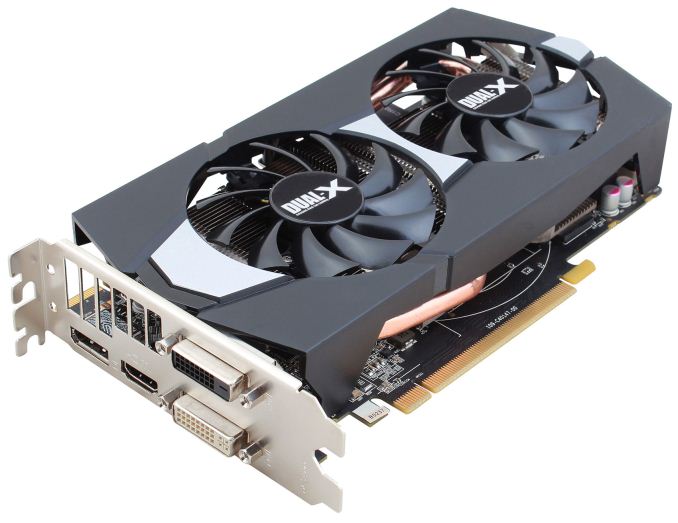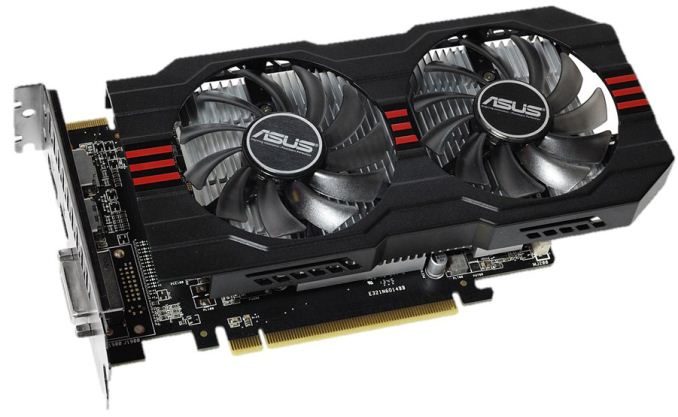The AMD Radeon R7 265 & R7 260 Review: Feat Sapphire & Asus
by Ryan Smith on February 13, 2014 8:00 AM ESTFinal Words
Bringing this review to a close, we have an admittedly straightforward scenario to look at. As AMD has already shown their cards by launching all of their GPUs for this generation, these lower tier mainstream parts don’t pack any great surprises. But they do fill important roles in AMD’s product lineup and represent a general increase in the price-to-performance ratio for video cards within the $100-$150 mainstream market. Which is all the more important in light of AMD’s restructuring of the R7 260 series and its associated price cuts.
Short and to the point then, this is one of my favorite kind of articles to write. By reducing Radeon R7 260X prices along with introducing the Radeon R7 265 and Radeon R7 260, AMD will be increasing their performance in this entire segment to the benefit of all, full stop. The R7 260, R7 260X, and R7 265 form a very impressive trio of cards that at their new prices should help satisfy customers who have been looking to upgrade from pre-GCN cards but have been dissatisfied with the performance of AMD’s sub-$150 lineup thus far.
To that end, once it begins shipping at the end of this month the R7 265 will bring with it an extremely significant increase in performance compared to the existing R7 260X, and only for a small change in price. Altogether we’re looking at an average performance increase versus R7 260X of 24% for a $10 (7%) increase in price, a very clear improvement in AMD’s price-to-performance ratio for their best sub-$150 card. More remarkable yet, on a competitive basis the R7 265 will easily beat the best of NVIDIA’s current lineup, if only because it’s between NVIDIA cards, outperforming the GTX 650 Ti by 48% and even breaking even with the more expensive GTX 660. Consequently on a price/performance basis this is going to put AMD in a very good position and will make the R7 265 the card to get at $150.
But with that said, AMD will be making the usual tradeoffs that come with reducing the prices of increasingly powerful cards, along with some new tradeoffs. Power consumption is going up slightly and power efficiency is going down slightly compared to the R7 260X and R9 270, as this is what usually happens in these situations. Meanwhile $150 AMD buyers will now be missing out on the feature benefits of GCN 1.1 such as TrueAudio, as R7 265’s Pitcairn GPU will not have that functionality present.
As for the R7 260, with the official launch already behind us this is less a discussion about what will be than what is. From a performance perspective the R7 260 nicely fills its intended (if narrow) role, slotting between the R7 250X and R7 260X. In fact R7 260 is a very significant step up given the circumstances, outperforming R7 250X by an average of 22% and even besting the GTX 650 Ti by 9%.
From a performance standpoint R7 260 is going to be extremely solid. The concern right now is that this is only the case if it is at its $109 MSRP. As strong as the card is right now, it’s too close to R7 260X in price for its 10% lower performance, and it’s in an especially bad spot if prices don’t finally come down once the R7 260X price cuts take effect. AMD and their partners are playing in an extremely price sensitive market with R7 260, so its success will depend on making sure it stays away from R7 260X.
Which brings us to our next point, which is pricing and availability. So long as AMD can ensure a solid supply and that retailers actually sell the R7 260 series cards at their MSRPs, then AMD is golden. However as we discussed in our introduction, the sketchy supply for the R9 270 series and the highly inflated prices leaves us worried as to whether AMD can deliver on their pricing promises at the moment. The biggest component of AMD’s restructuring of the R7 260 series is R7 265, and that’s the part that’s at greatest risk of being distorted since it uses the same Pitcairn GPU as the R9 270 series. Since the R7 265 won’t arrive for another two weeks anyhow we have plenty of time to wait and see how this progresses, and the hardware is solid regardless, but AMD does need to hit $149 with availability for all of this to work.
Speaking of two weeks, by allowing such a large gap between today’s product announcements and when those products will hit retail, AMD is showing their hand to consumers and NVIDIA alike relatively early. As hyper-competitive as the sub-$150 market is – keep in mind that in terms of volume, the majority of AMD’s sales are sub-$150 – major price cuts and new product launches do not go unnoticed or left without a response. So it will be interesting to see what, if anything, NVIDIA does to counter AMD’s restructuring of the R7 260 series.
Finally, let’s quickly recap our two board partner cards, Sapphire’s R7 265 and Asus’s R7 260. As far as performance is concerned both of these are stock cards, so there’s little to say regarding their performance that hasn’t been said above. As for their customizations and designs as it relates to build quality and cooling, both look to be very capable contenders. Most importantly, both cards had no problem hitting a proper balance between temperatures and acoustics, offering great temperatures with very low noise levels. We’ll see what other partners’ cards bring in due time once more cards launch, but it’s clear that neither card is going to be easy to beat.












52 Comments
View All Comments
edzieba - Thursday, February 13, 2014 - link
Are Anandtech considering a switch from average framerates to latency/frame-rating (either with Fraps or FCAT)?Ryan Smith - Thursday, February 13, 2014 - link
Frame pacing is an additional tool we run from time to time as is appropriate, but it's not something we'll use for every review. Frame pacing is largely influenced by drivers and hardware, neither of which shift much on a review-by-review basis. So it's primarily reserved for multi-GPU articles and new architectures as appropriate.And especially in the case of single-GPU setups, there's not much to look at. None of these cards has trouble delivering frames at a reasonably smooth pace.
http://www.anandtech.com/bench/GPU14/873
HisDivineOrder - Thursday, February 13, 2014 - link
Yeah, that's what you guys said before the whole frame latency thing broke, too. It's a shame you aren't doing proper monitoring to catch it the first time and are setting up a scenario where it flies under the radar yet again the next time AMD decides to get lax on making drivers.Then again, this article is in red, right? AMD News is right next to it. Hell, even the comment button is red. I'm guessing the AMD overlords wouldn't like it very much if you were constantly harping on something they dropped the ball on so completely that their competitor had to slowly explain to them how to even see the problem and then how to fix it.
gdansk - Thursday, February 13, 2014 - link
It's a shame. I'm with your argument. AnandTech should try to include as many indicative benchmarks as possible. At times FCAT is indicative.But sadly, calling someone a shill with only coincidence is no better than libel. You have made an unsubstantiated allegation. It is decidedly unscientific to insult one's professional integrity with mere coincidental insinuations and no evidence. Why would you do that?
Death666Angel - Thursday, February 13, 2014 - link
So they are in the pocket of nVidia, Intel, AMD, Android AND Apple? Wow, those companies must really be idiots then.Gigaplex - Thursday, February 13, 2014 - link
I don't know where you got all the other brands from, but technically yes Ars is in the pockets of AMD. See http://www.anandtech.com/portal/amd - this is sponsored by AMD.Gigaplex - Thursday, February 13, 2014 - link
Bah, AnandTech, not ArsDeath666Angel - Thursday, February 13, 2014 - link
I know _that_. But he is clearly insinuating that their opinions are bought by AMD. And since products from all those companies I listed (who are all competitors) regularly get recommendations, and Anandtech gets then accused of being paid shills, I find it funny that anyone thinks that is true. If they are bought by AMD as suggested, how come they don't come up with a benchmark track that makes AMD CPUs shine? Or how come they slammed the R9 so much for the noise? It's all pretty silly.nader_21007 - Friday, February 14, 2014 - link
It seems that it hurts you how come this site is not biased and doesn't admire every thing Nvidia, like other sites? well you can go read Tom's Hardware, WCCFtech and every other hardware site, and be sure they will satisfy your needs.zodiacsoulmate - Friday, February 14, 2014 - link
Yea, it's like trying to compare samsung to apple again, sure you can say there is no way to compare which one is better hardware considered, the user experience is just not on pair...